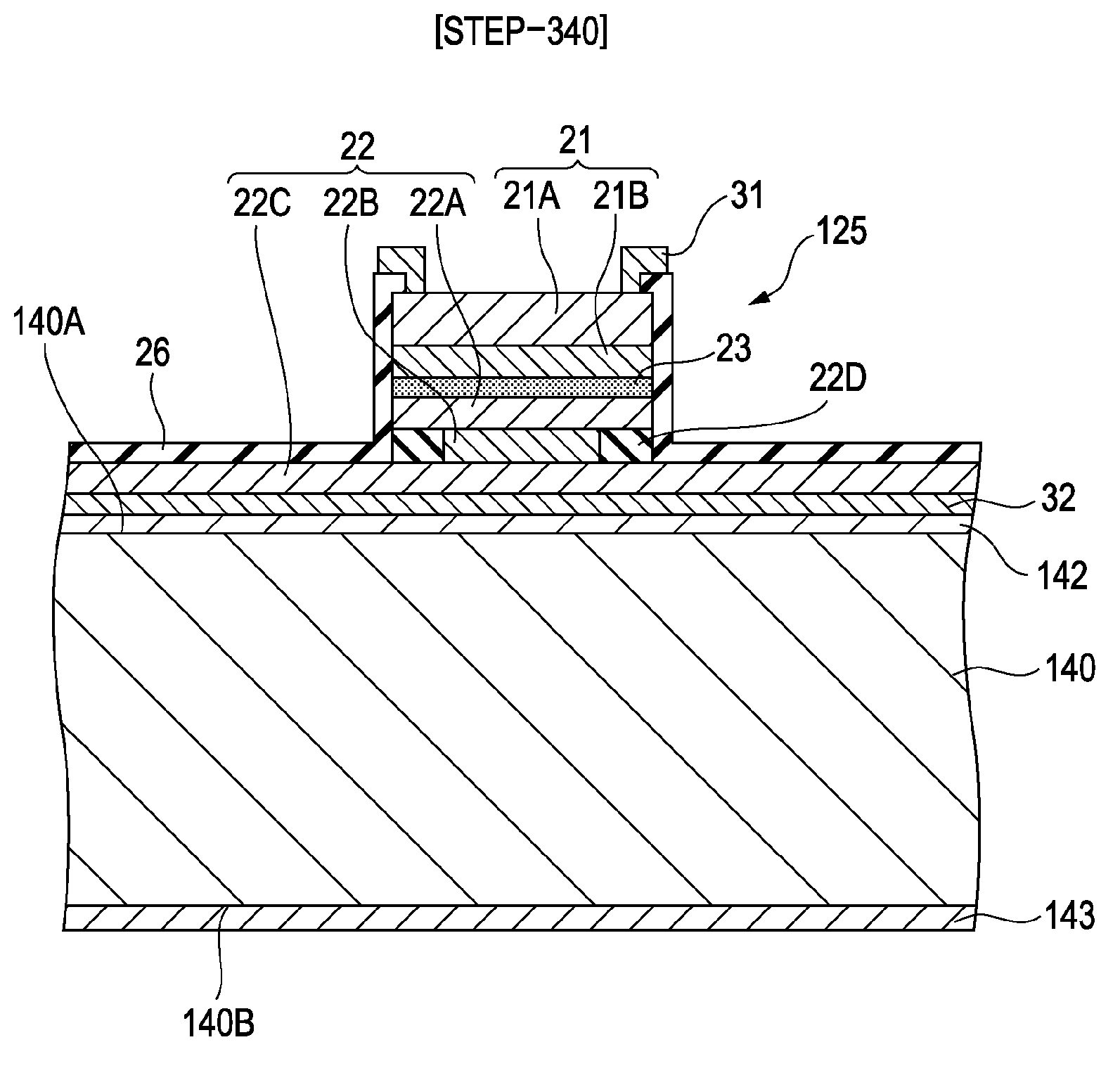Light-emitting element assembly and method for manufacturing the same
a technology of light-emitting elements and assembly methods, which is applied in the direction of lasers, semiconductor lasers, solid-state devices, etc., can solve the problems of reducing the degree of design freedom, and reducing the efficiency of light-emitting elements. , to achieve the effect of preventing the occurrence of problems, reducing heat generation, and reducing the emission efficiency of light-emitting elements
- Summary
- Abstract
- Description
- Claims
- Application Information
AI Technical Summary
Benefits of technology
Problems solved by technology
Method used
Image
Examples
example 1
[0059]Example 1 relates to a light-emitting element assembly according to an embodiment of the present invention, and specifically to a light-emitting element assembly with a first configuration, and further relates to a method for manufacturing a light-emitting element assembly according to a first embodiment of the present invention. In Example 1 and Examples 2 and 3 described below, a first conductivity type is n-type, and a second conductivity type is p-type. In Example 1 and Examples 2 and 3 described below, a light-emitting element is a surface emitting laser element (vertical cavity surface emitting laser element, VCSEL) in which light is emitted through a first compound semiconductor layer.
[0060]FIGS. 1A and 1B are a schematic partial sectional view of a light-emitting element assembly of Example 1 and a schematic partial plan view of a support substrate, respectively. The light-emitting element assembly of Example 1 is provided with a support substrate 40 and a light-emitti...
example 2
[0078]Example 2 is a modification of Example 1 and relates to a light-emitting element assembly having a second configuration.
[0079]As schematically shown in a partial sectional view of FIG. 8, in a light-emitting element assembly of Example 2, a first electrode 32 is not formed in a projective image of a mesa structure 25 along the axial direction of a recessed portion 41. In addition, unlike in Example 1, a first compound semiconductor layer 21 is not divided into first and second portions. The planar shape of the edge 31A of the first electrode 31 is the same as the shape of the projective image of the mesa structure 25.
[0080]Except for this point, the configuration and structure of the light-emitting element assembly of Example 2 may be the same as those of the light-emitting element assembly of Example 1. Therefore, detail description is omitted. In the light-emitting element assembly of Example 2, the first electrode 31 may be formed, on the basis of a so-called liftoff method...
example 3
[0081]Example 3 relates to a method for manufacturing a light-emitting element assembly according to a second embodiment of the present invention. The method for manufacturing the light-emitting element of Example 3 is outlined with reference to FIGS. 9, 10, 11, 12, and 13 which are schematic partial sectional views of a laminated structure, etc.
Step-300
[0082]First, in the same manner as in Step-100 of Example 1, an etching stop layer (not shown), a first compound semiconductor layer 21 (a first DBR layer 21A and a first cladding layer 21B) of a first conductivity type (specifically, n type), a light-emitting portion (active layer) 23, and a second compound semiconductor layer 22 (a lower layer (second cladding layer) 22A, an intermediate layer 22E, and an upper layer (second DBR layer)22C) of a second conductivity type (specifically, p type) are deposited in order on a main surface of a n-GaAs substrate 10 for manufacturing a light-emitting element by a MOCVD technique. Further, a ...
PUM
 Login to View More
Login to View More Abstract
Description
Claims
Application Information
 Login to View More
Login to View More - R&D
- Intellectual Property
- Life Sciences
- Materials
- Tech Scout
- Unparalleled Data Quality
- Higher Quality Content
- 60% Fewer Hallucinations
Browse by: Latest US Patents, China's latest patents, Technical Efficacy Thesaurus, Application Domain, Technology Topic, Popular Technical Reports.
© 2025 PatSnap. All rights reserved.Legal|Privacy policy|Modern Slavery Act Transparency Statement|Sitemap|About US| Contact US: help@patsnap.com



